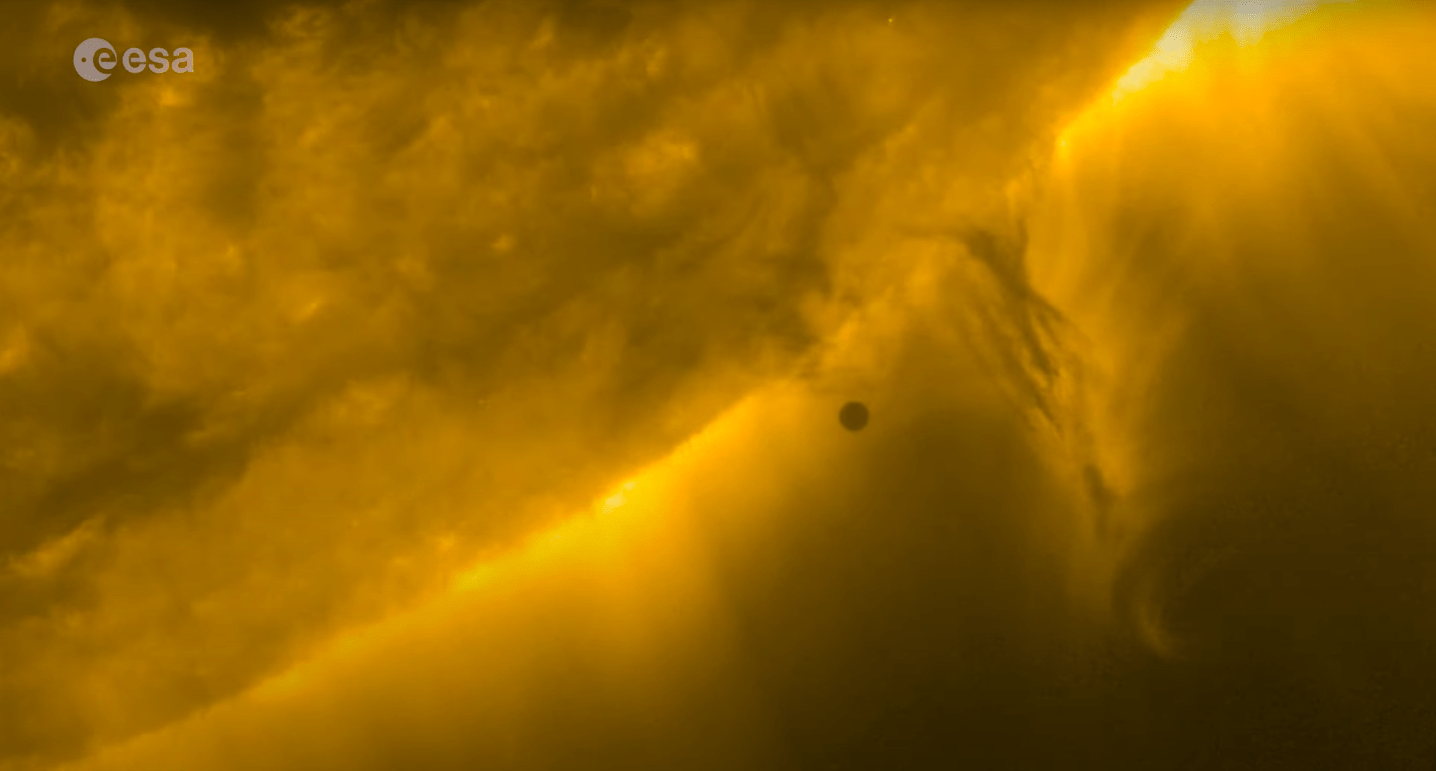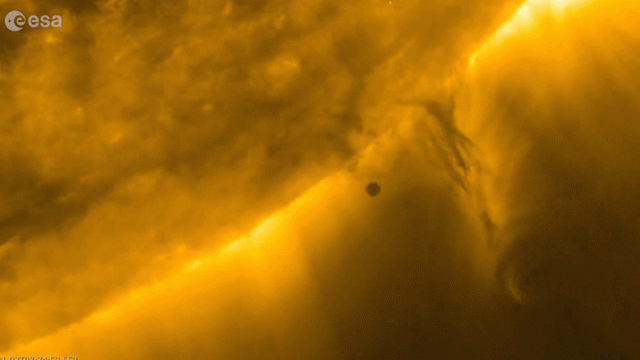On January 3, the Solar Orbiter spotted Mercury passing in front of the Sun. The transit of the small, dark orb puts the scale of our solar system into sharp relief.
Mercury is about one-third the size of Earth, and it looks particularly teeny next to the Sun’s 1,392,083 km diameter. The Solar Orbiter is a joint mission between NASA and the European Space Agency; it launched in 2020 and takes measurements of solar processes alongside NASA’s Parker Solar Probe.
The Solar Orbiter captured the transit in several images. Its Polarimetric and Helioseismic Imager (PHI), designed to survey the Sun’s magnetic field, caught the planet looking like a mobile sunspot as it sped across the field of view; the Extreme Ultraviolet Imager, which captures the intense dynamics of the Sun’s corona, made Mercury look even more minuscule next to the curve of the Sun.

Another tool, the Spectral Imaging of the Coronal Environment (SPICE) instrument aboard the orbiter, revealed Mercury’s transit as it appeared through different layers of the solar atmosphere.
“It’s not just looking at Mercury passing in front of the Sun, but passing in front of the different layers of the atmosphere,” said Miho Janvier, a researcher at the Institut d’Astrophysique Spatiale, in an ESA release.

Even though Mercury is the innermost planet, orbiting the Sun every 88 Earth days, it features both extremely hot and extremely cold temperatures. Lacking any substantial atmosphere, Mercury can often be hundreds of degrees below freezing. The Solar Orbiter views show Mercury travelling across the Sun’s face at nearly 47 km per second.
Mercury’s been enjoying a moment in the spotlight thanks to the ESA’s BepiColombo mission, which is studying the planet from up close. The mission will make its next flyby of Mercury in June, and the Solar Orbiter will make its next close approach of the Sun in April.
More: Solar Orbiter Captures Dazzling Images of the Sun’s Chaotic Activity
